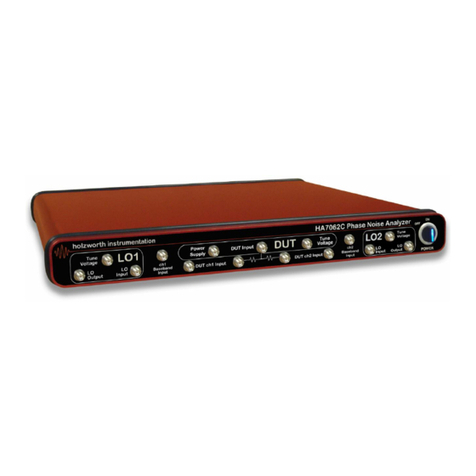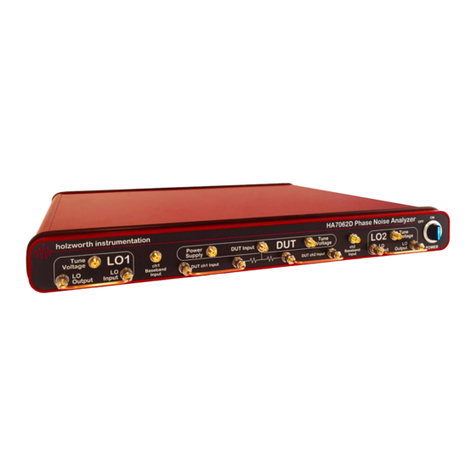
Page 2of 60
Table of Contents
1.0 HA7701A CONFIGURATION SUMMARY................................................................................. 4
2.0 PERFORMANCE SUMMARY................................................................................................... 5
2.1 DUT INPUT (RF SIGNAL INPUT FOR ADDITIVE MODE)....................................................5
2.2 SUPPLY & TUNE VOLTAGE................................................................................................ 5
2.3 PHASE NOISE MEASUREMENTS.......................................................................................5
2.4 INPUT DAMAGE THRESHOLD.............................................................................................5
2.5 INSERTION LOSS DATA ...................................................................................................... 6
2.5.1 LO Insertion Loss (DUT/Signal Input to Internal Mixer LO port).......................................6
2.5.2 RF Insertion Loss - Absolute Mode (DUT Input to Internal Mixer RF port).......................7
2.5.3 RF Insertion Loss - Additive Mode (Signal Input to RF Mixer)..........................................7
2.5.4 RF Insertion Loss - Additive Mode (Signal Input to RF Output)........................................ 8
2.5.5 RF Insertion Loss - Additive Mode (RF IN to Mixer RF)................................................... 8
2.6 ABSOLUTE MEASUREMENT SENSITIVITY........................................................................9
2.7 ADDITIVE MEASUREMENT SENSITIVITY........................................................................ 11
2.7.1 Additive Measurement Sensitivity (+16dBm LO Power)................................................. 12
2.7.2 Additive Measurement Sensitivity (+13dBm LO Power)................................................. 13
2.7.3 Additive Measurement Sensitivity (+10dBm LO Power)................................................. 14
3.0 PHASE NOISE ANALYZER INSTALLATION ........................................................................ 15
3.1 HARDWARE INSTALLATION............................................................................................. 15
3.2 INSTRUMENT COMMUNICATION..................................................................................... 15
4.0 HOLZWORTH PNA SOFTWARE APPLICATION.................................................................. 16
4.1 USB, RS-232, AND GPIB COMMUNICATION..................................................................... 17
4.1.1 GPIB COMMUNICATION.............................................................................................. 17
4.1.2 DETERMINING INSTRUMENT VIRTUAL COM PORT................................................. 18
4.2 ETHERNET COMMUNICATION.......................................................................................... 19
4.2.1 LAN CONNECTION...................................................................................................... 19
4.2.2 DIRECT PC CONNECTION (DHCP)............................................................................. 19
4.2.3 ASSIGNING A STATIC IP ADDRESS........................................................................... 20
4.3 GUI OVERVIEW.................................................................................................................. 22
4.4 FIRMWARE UPDATES........................................................................................................ 24
4.5 MEASUREMENT................................................................................................................. 25
4.5.1 MEASUREMENT SETUP.............................................................................................. 25
4.5.2 FREQUENCY SPAN (OFFSET ADJUSTMENT)........................................................... 26
4.5.3 TRIGGER/AVERAGING/BANDWIDTH ......................................................................... 26
4.6 INPUTS ............................................................................................................................... 27
4.7 OUTPUTS............................................................................................................................ 27
4.8 ACQUIRING DATA.............................................................................................................. 28
4.9 TRACE/CALCS.................................................................................................................... 28
4.9.1 SMOOTHING................................................................................................................ 29





























